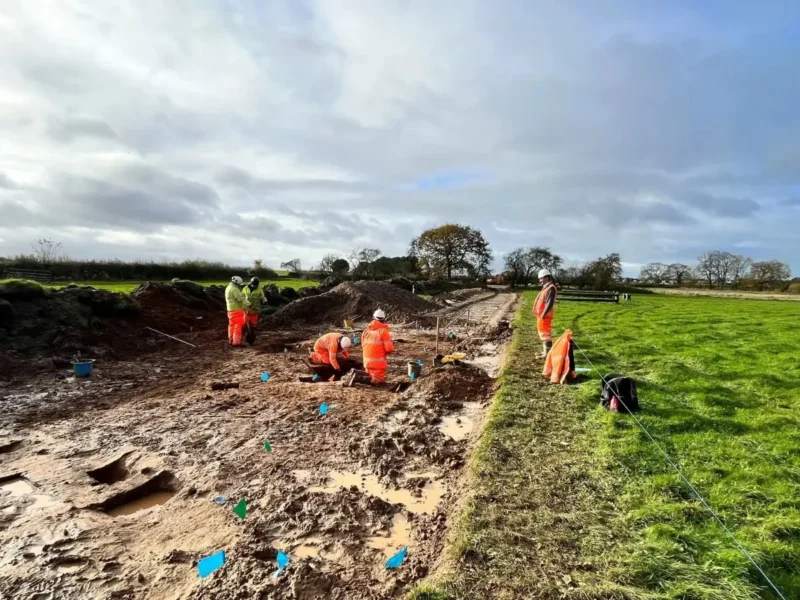We had one of our experts answer common questions you may have around archaeology, what is it, why it’s carried out and who pays for it.
Archaeology is the science of studying past societies and civilisations through their material culture. In the UK this study of human behaviour most often encompasses the analysis of everyday waste such as broken pottery sherds, butchered animal bone or charred or waterlogged plant remains. These artefacts and ecofacts are generally recovered through excavation of buried soils and can give us clues to the nature of past environments, how people lived, ate, worked, and cared for their dead.
Why do we carry out archaeological work and who pays for it?
The majority of archaeological work in the UK is carried out as part of the planning process and is developer funded. If a new development (ie road, rail, housing and green energy schemes) is likely to impact on significant archaeological remains the local planning authority may place a planning condition on the works in accordance with the national planning policy framework (NPPF). For most schemes this leads to preservation by record of any archaeological remains, whereby as a minimum any archaeological remains are excavated, recorded and published so that a permanent record is made prior to their removal as part of the development. Where archaeological remains are of particular significance, archaeology may be preserved in situ. Preserving buried remains within a development scheme means that valuable information is preserved for future societies, and a time when we may have developed less destructive techniques and greater analytical tools to better understand our buried past.
What are the different types of archaeological excavation?
Archaeological work is dependent on where a project is in the planning process, and the likely significance of any buried remains.
Archaeological evaluation through trenching or test pitting is generally the first intrusive archaeological work and often follows geophysical survey. Trenches or test pits are excavated across a site to determine whether archaeological remains survive within a site, and the nature and date of those remains. Evaluation trenches can also confirm and characterise known crop marks or geophysical survey results. The number and density of trenches to be excavated will be dependent on the nature of any likely archaeology and the results of previous archaeological work.
If significant archaeological remains are revealed through trenching, archaeological mitigation may be required to better understand those results. Mitigation can take the form of open area excavation in the area of the trenches where significant remains were discovered. Any archaeological remains lying in areas between trenches will be revealed and a more detailed picture will be gained.
Excavation can also be known by terms such as strip, map and sample or strip, map and record. Generally the terminology used depends on when the archaeological work takes place, ie before or during the construction window.
For smaller schemes, or for areas where there is a lower likelihood of finding archaeological remains, a watching brief may be required. Watching briefs are carried out during construction ground works such as the excavation of drainage trenches or house foundations.
What happens after archaeological fieldwork?
Once site work is complete the finds and environmental soil samples are washed and processed and the material remains assessed and analysed by relevant post-excavation specialists. The site records for the buried archaeological features are interpreted in relation to the material remains and a report published. As part of the fieldwork or post-excavation phase there may be wider reaching public engagement with talks, webinars and site visits.
Once the final report is produced the physical and digital archive is deposited with a local museum and/or the local Historic Environment Record (HER) and the Archaeology Data Service (ADS) so that it is accessible to any future interested party.
Look out for a future blog from the post-excavation and archiving team.
To find out more about our archaeological services contact us.







